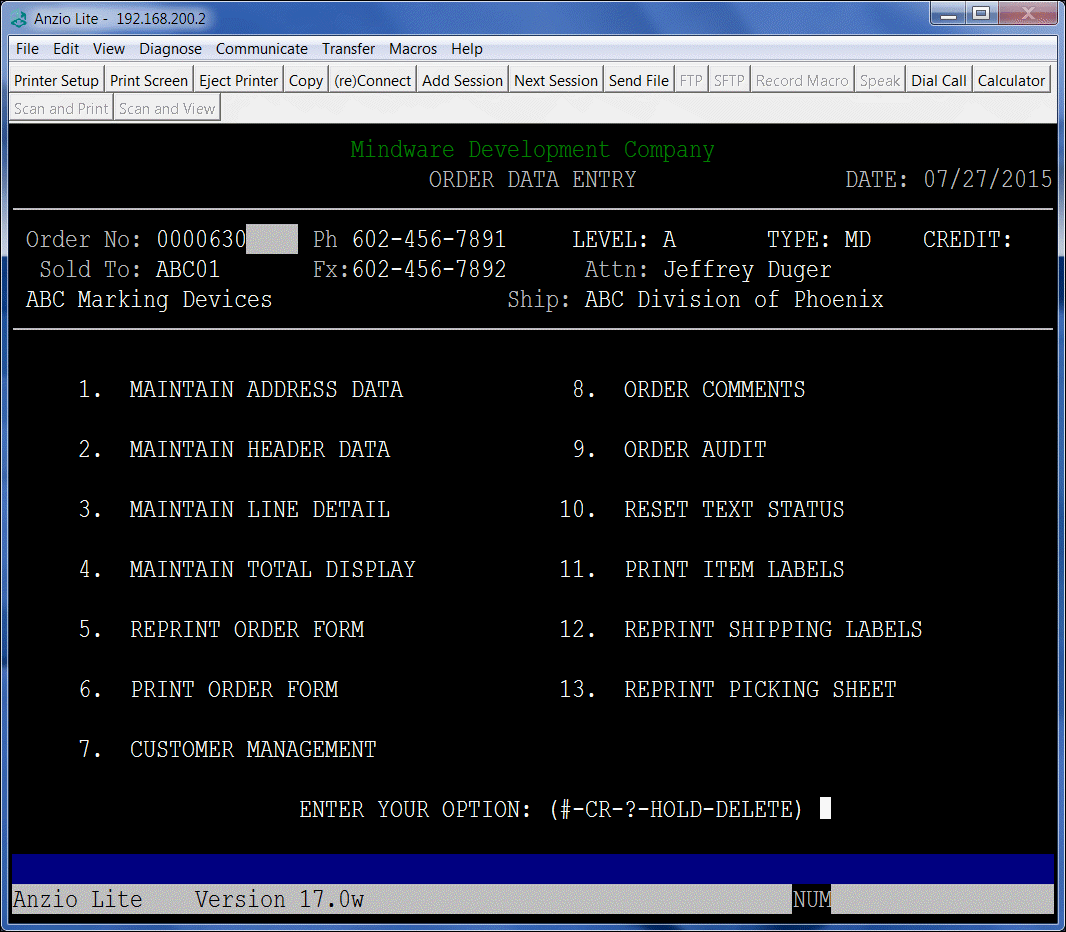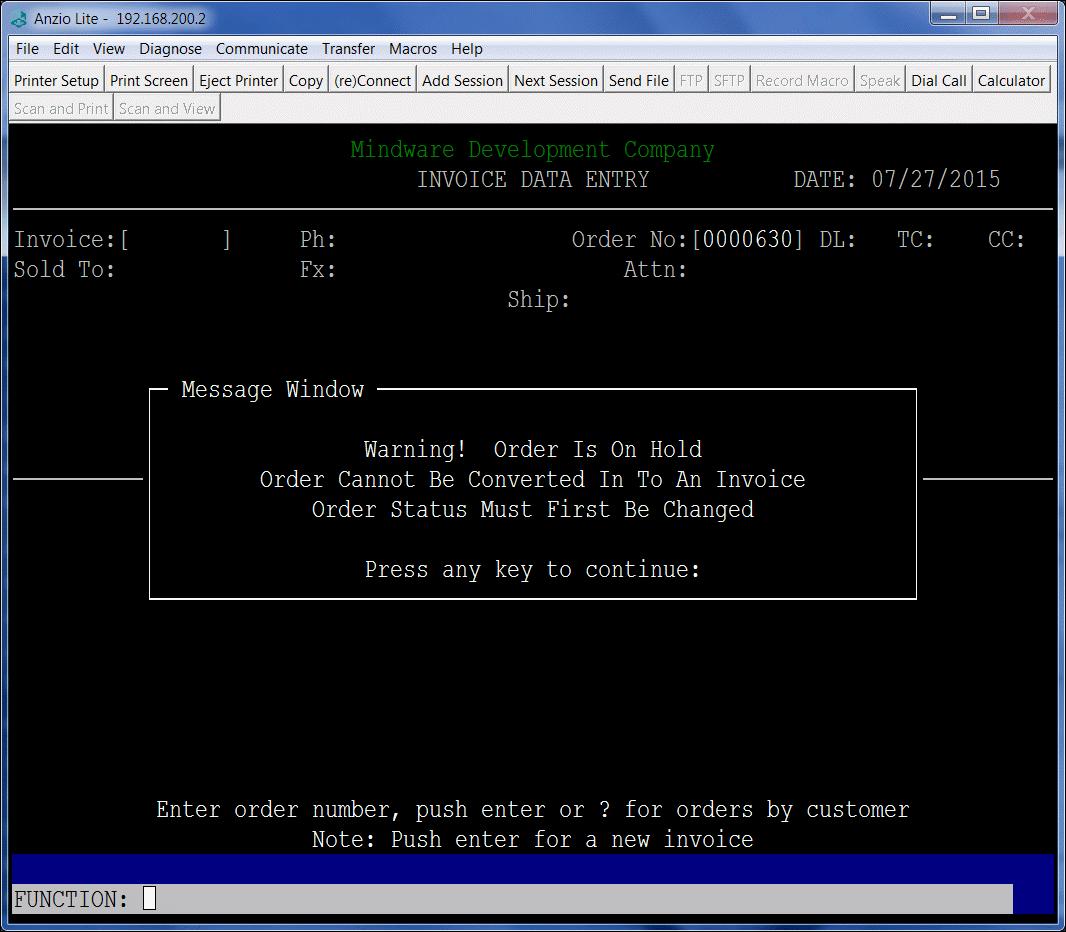The payroll system allows you to enter manual checks that were not processed through the payroll process, as well as reversing previously written checks issued during a payroll. Void checks can also be entered to track for check reconciliation.
Prior to entering a manual check, you must run A. Pay Cycle Initialization on the Pay Cycle Menu. You will be asked for the Payroll Period Ending Date, Deduction Period of the month, Pay Cycle (weekly, bi-weekly, semi-monthly, monthly, quarterly or annually). Enter the date you want to print on the check, The current quarter (1-4) automatically displays on the screen. You will be asked to select which earnings and deductions you want for this pay period. Proceed to Step 1.
1. Select Manual Check Data Entry on the Pay Cycle Menu.
2. Check No: Type the check number you issued to this employee and Enter.
Notes: To reverse a previously written check on the computer, type the check number followed by an R and Enter.
3. Employee No: Type a valid employee number and Enter or type ?+ the Enter key to display the Employee Number Selection window.
4. Check Date: Type the date the check was written in MMDDYY format and Enter.
5. Check Amount: Type the net amount of the check and Enter.
6. Is The Check Information Correct? (Y-N-DELETE): Type Y+ the Enter key if the check header information is correct. Proceed to Step 7. Type N+ the Enter key to edit the check information. Return to Step 4 Type DELETE+ the Enter key to remove the check from the manual check file. Return to Step 2.
7. Code: Type a valid earnings code and Enter or type ?+ the Enter key to display the Earnings Code Selection window. Press F4 to end earnings code input. Proceed to Step 14
8. Dept: The default department code from this employee’s master record displays on your screen. Press the Enter key to accept the code displayed or type ?+ the Enter key to display the Department Code Selection window.
9. W/C: The default worker’s compensation code from this employee’s masterfile displays on your screen. Press the Enter key to accept the code displayed or type ?+ the Enter key to display the Worker’s Compensation Code Selection window.
10. Distribution: The G/L distribution account number for this earnings code displays on your screen. The cursor moves to the next input field.
11. Rate: Press the Enter key to accept the rate displayed or override with a new hourly rate. Press F2 to return Step 10 to change the G/L distribution account number.
12. Hours: Press the Enter key to accept the hours displayed for this pay cycle or override with the correct number of hours.
Notes: The cursor will stop at steps 11 and 12 if this earnings code is set up for units and hours in ‘Earnings Code Maintenance’ on the Payroll Definition Menu.
13. Amount: Press the Enter key to accept the calculated amount of rate x hours or type a new amount if this earnings code is not set up as hours and units and Enter.
14. Is The Data Correct? (Y-N-DELETE): Type Y+ the Enter key if this earning code information is correct. Return to Step 7 for the next earnings code entry. Type N+ the Enter key to edit this earning code information. Go to Step 7. Type DELETE+ the Enter key to delete the entire check entry. Return to Step 2.
15. Code: Type a valid deduction code and Enter or type ?+ the Enter key to display the Deduction Code Selection window. Note: The voluntary deduction description and the G/L distribution displays on your screen. The cursor moves to the amount field.
16. Amount: Type the amount of the voluntary deduction and Enter. Press F2 to edit the G/L distribution account number.
17. Is The Data Correct? (Y-N-DELETE): Type Y+ the Enter key if this deduction code information is correct. Return to Step 15 for the next deduction code entry. Type N+ the Enter key to edit this deduction code information. Go to Step 15. Type DELETE+ the Enter key to delete all deduction code entries. Return to Step 15.
18. Federal W/H: Type the amount of the federal tax withheld for this check and Enter.
19. State W/H: Type the amount of the state tax withheld for this check and Enter.
20. Social Security: Type the amount of social security withheld for this check and Enter.
21. Medicare: Type the amount of medicare withheld for this check and Enter.
22. Is The Data Correct? (Y-N-DELETE): Type Y+ the Enter key to accept tax information. Return to Step 2 for the next check entry. Type N+ the Enter key to edit the tax information. Return to Step 18. Type DELETE+ the Enter key to delete the entire check. Return to Step 2.
Notes: Before you exit the screen, the amount of the check must be distributed correctly and the balance must equal zero. If the check is out of balance, you will be prompted to either delete the entire check or press the Enter key to make corrections.


